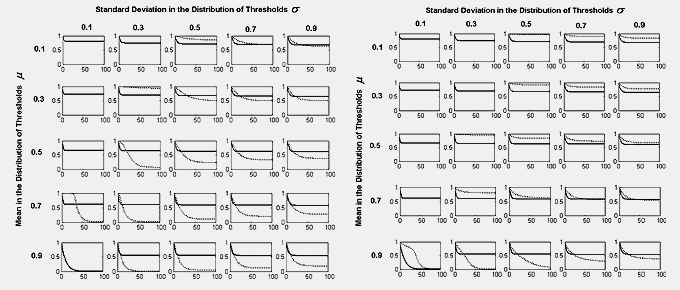A simple model of stability in critical mass dynamics

Publications
Research Summary
Collective behaviors often spread via the self-reinforcing dynamics of critical mass. In collective behaviors with strongly self-reinforcing dynamics, incentives to participate increase with the number of participants, such that incentives are highest when the full population has adopted the behavior. By contrast, when collective behaviors have weakly self-reinforcing dynamics, incentives to participate “peak out” early, leaving a residual fraction of non-participants. In systems of collective action, this residual fraction constitutes free riders, who enjoy the collective good without contributing anything themselves. This “free rider problem” has given rise to a research tradition in collective action that shows how free riding can be eliminated by increasing the incentives for participation, and thereby making cooperation strongly self-reinforcing. However, we show that when the incentives to participate have weakly self-reinforcing dynamics, which allow free riders, collective behaviors will have significantly greater long term stability than when the incentives have strongly self-reinforcing dynamics leading to full participation.
Keywords: collective action, critical mass, large group problem, social networks, homophily

